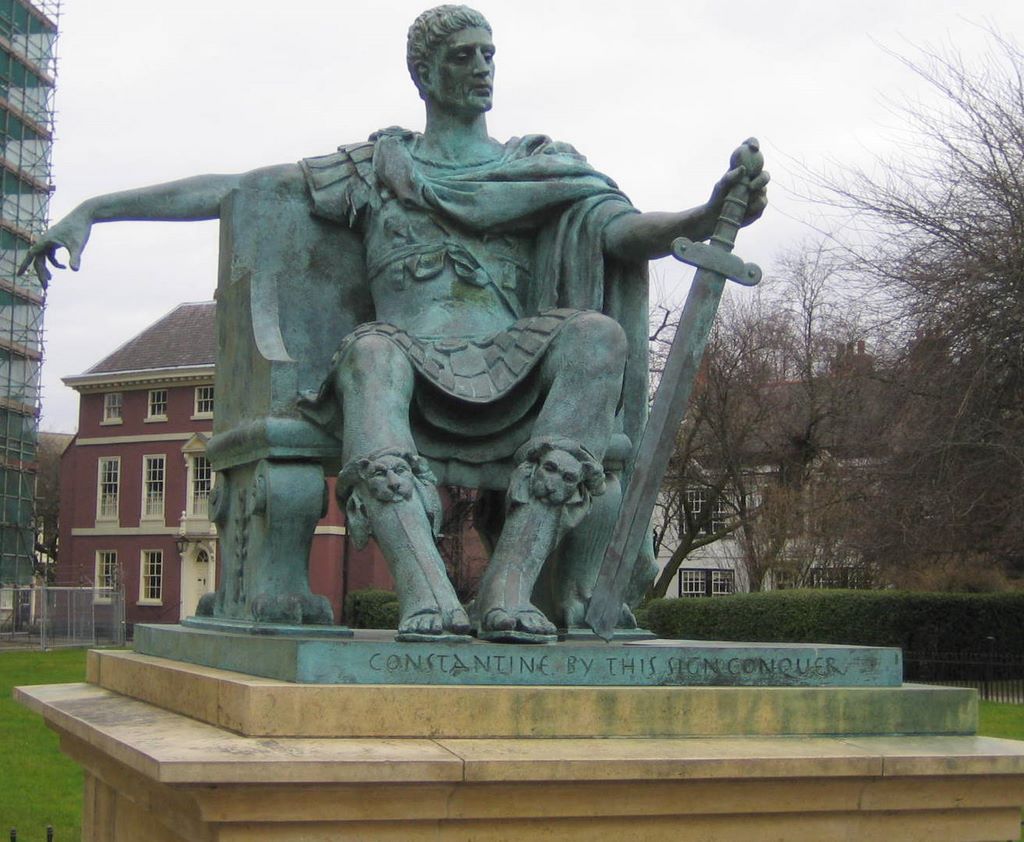
Let's start our tour near the Minster (Cathedral) where, just outside the South entrance, we find this incredible hulk of a statue of Constantine the Great -- there's good reason for this: York got its start when the Romans put their military camp near the junction of the Ouse and Foss rivers. When they divided Britannia into two areas, Eboracum (as they called this town) became the capital of Britannia Secunda. Roman rule deteriorated and by the early fourth century, AD, the area fell under rebels. Emperor Constantius I subdued the area but died in York in 306. (He was the second Roman emperor to die in this little town; you'd think they'd stay away!) His troops then proclaimed his son Constantine as emperor exactly 1700 years before our visit. (The museum opened a show to commemorate this shortly after we left town). While this worked for Constantine's troops, the rest of the world needed a little more convincing as neo-cons had not yet been invented. It took Constantine (a great military strategist) 18 years to consolidate power through civil war and marriage -- is that the same thing? For forty years, the Roman empire had separate rulers --called Augusti -- for eastern and western zones. Constantine put an end to this, at least for a while.

The statue is fairly recent (and the shoes are to die for). Constantine the Great is, of course, known as the man who made the Roman empire Christian, although he waited to his deathbed to convert himself. Many consider him to be a saint which is pretty remarkable since he had his wife and son put to death, the son because of a rumor that he was sleeping with Constantine's wife, and that wife, a few months later, for spreading the rumor. (For spreading rumors or your legs, one punishment fits all).

While this statue is somewhat recent, York has many Roman remains both inside its museums and outside, as we shall see a little later. In fact, the cathedral (called a Minster) is built over the Roman meeting hall (which Romans called a Basilica long before Christians adopted the term for their large churches). One of their columns was found during the 1959 renovation and stands 22 feet tall across the street from this statue.